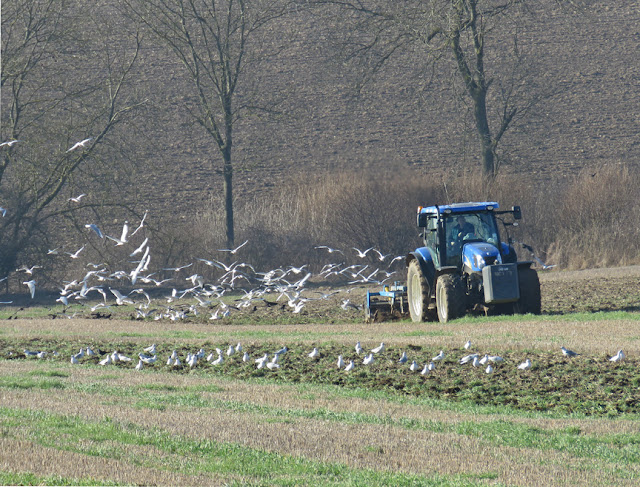Some flickers of hope

I couldn't help but visit Langley Vale Farm this morning to see how the fields are looking from the point-of-view of such arable gems as Red Hemp-nettle (from this very farm last summer). There is good news. The fields south of Nohome Farmhouse have been shallowly ploughed - the stubble and grass clumps from my last visit have gone. Now, I am no ecologist, and cannot possibly predict whether this in itself is enough to enable the arable flora to freely flower, but it is certainly better than the state of the fields a couple of weeks ago. This is the bottom of the field immediately east of Nohome Farmhouse, which has also had a similar treatment - the edge up against the hedgerow is where Cat-mint and Narrow-fruited Cornsalad can be found. Last year this area was swamped with grass and both were hard to find. The top of the very same field. This is very recent tree planting, which has not, so far, been stretched all that far down the field. I do hope that it will be s...











